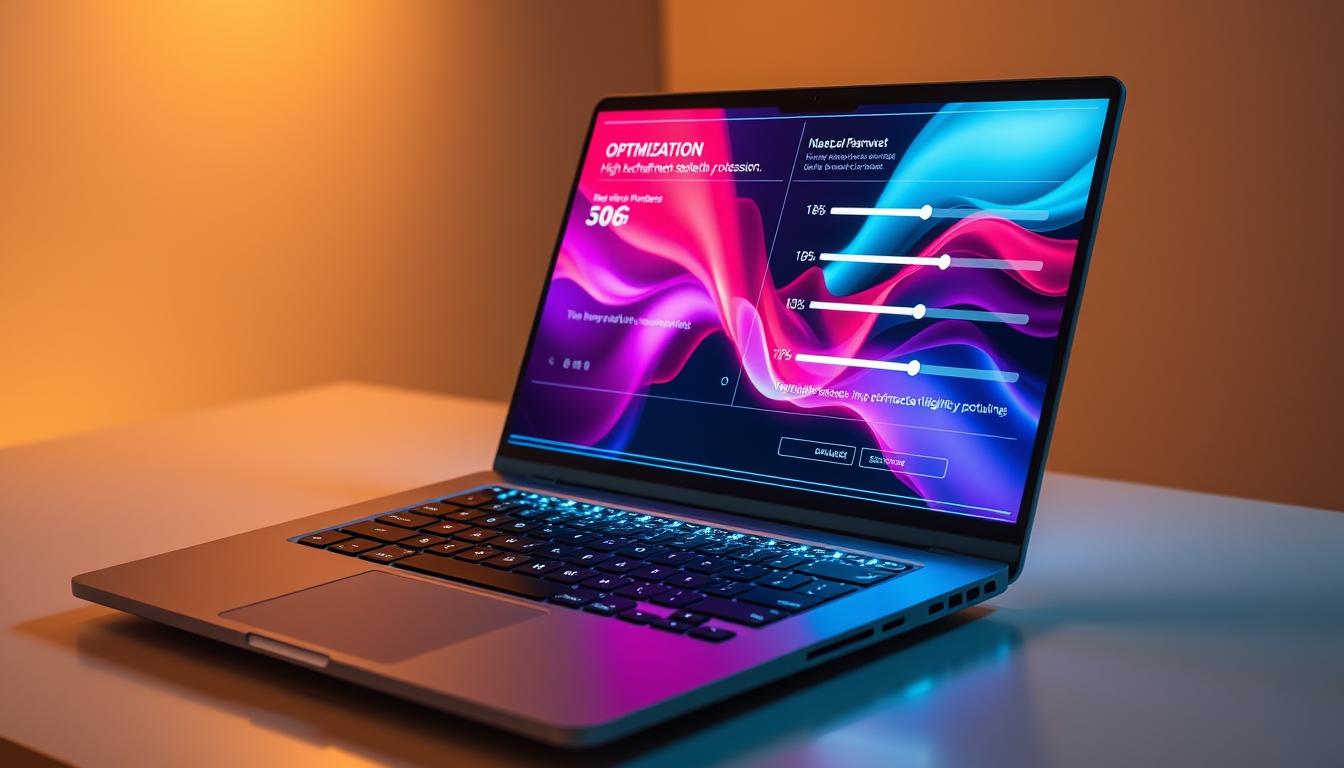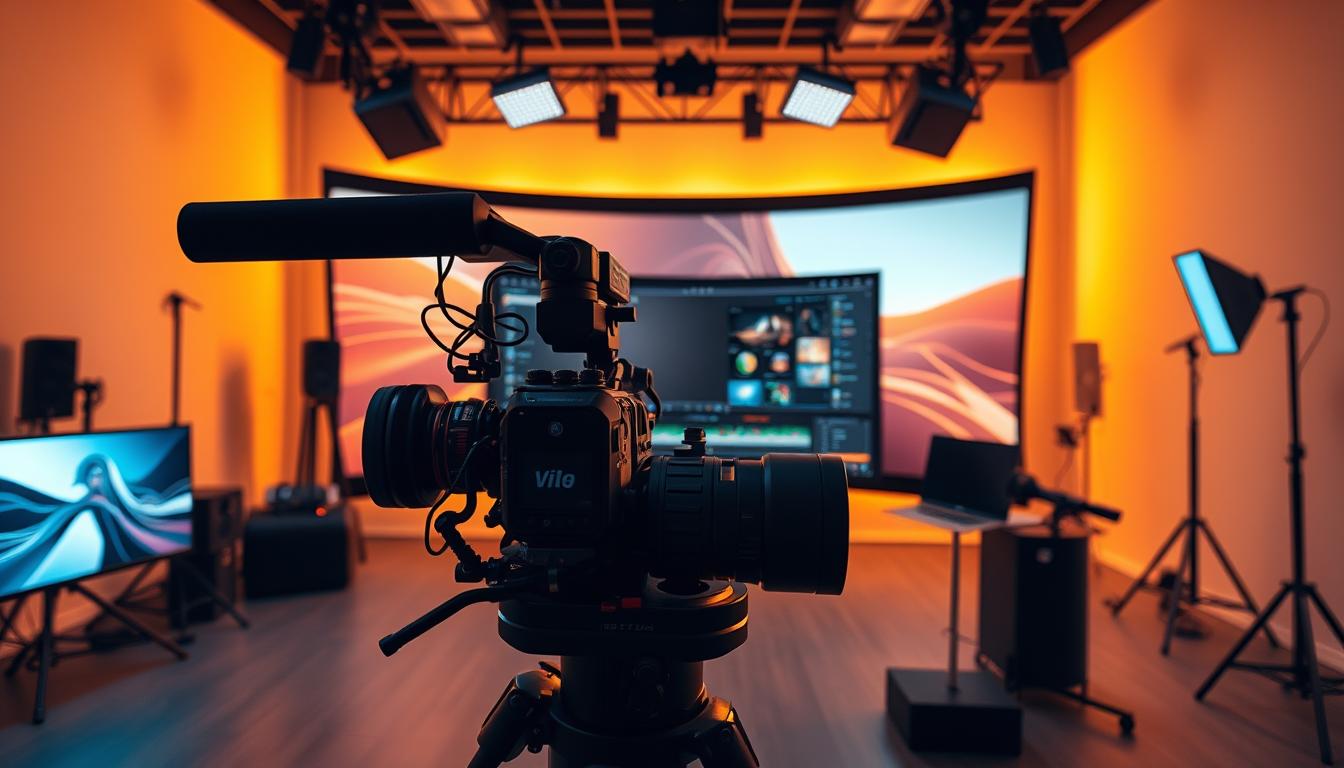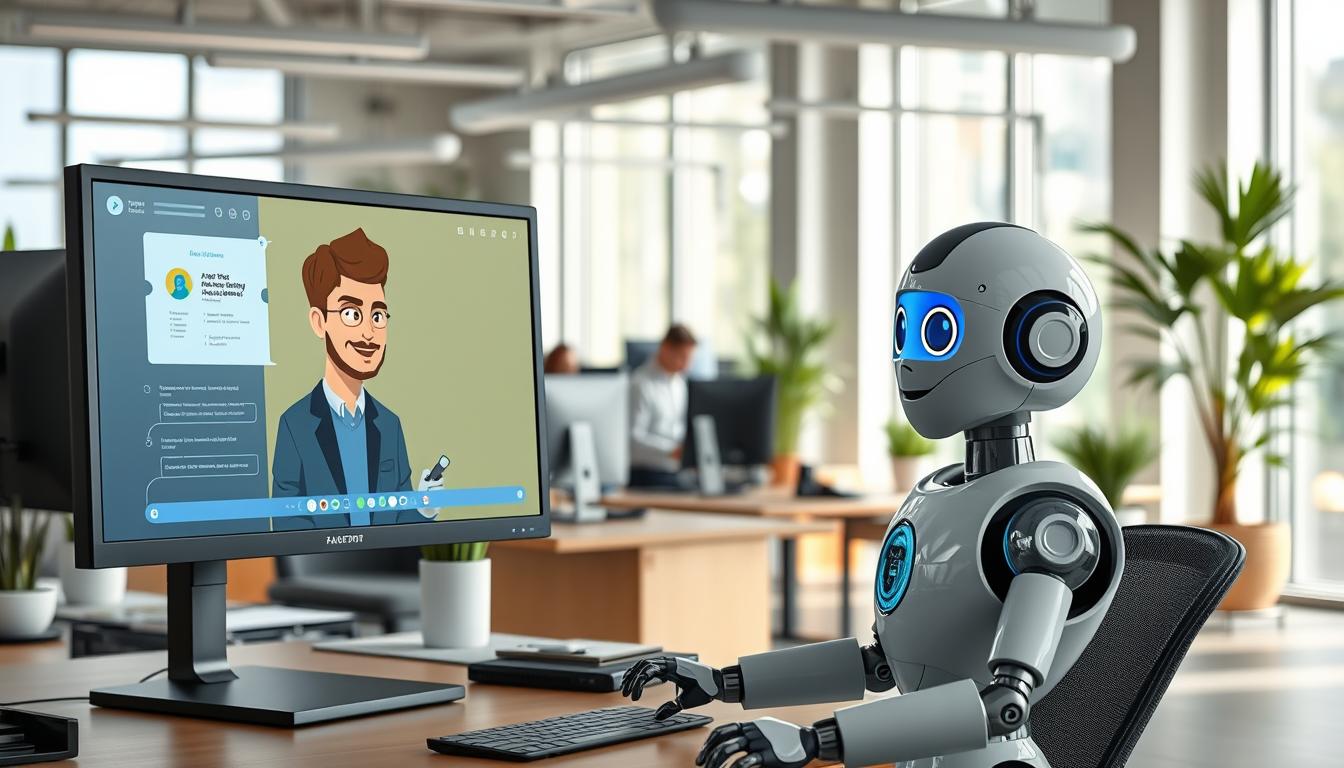Is your laptop slow to start or lag when you need it? You’re not alone. Many of us use our laptops for work, fun, and staying in touch. But a slow device can be really annoying.
Slow laptop performance often comes from big programs, programs that start automatically, and not enough storage. To boost productivity and get smooth performance, you need to find and fix these problems.
We’ll look at the best ways to make your laptop run better and faster.
Key Takeaways
- Identify and address the root causes of slow laptop performance
- Learn how to optimize your laptop for better performance
- Discover tips to boost productivity and achieve smooth performance
- Improve your laptop’s overall efficiency and responsiveness
- Enhance your user experience with a faster laptop
Why Is Your Laptop Running Slow? Common Causes Explained
Feeling frustrated with a slow laptop is common. If you’re asking “why is my laptop so slow”, you’re in the right place. There are several reasons why this happens.
Age-Related Performance Decline
Laptops get slower as they get older. This is due to two main reasons:
Normal Wear and Tear Effects
Over time, parts like the hard drive wear out. This makes your laptop slower. Regular use can cause this wear.
Technology Advancement vs. Older Hardware
New software and operating systems are made for newer hardware. Older laptops struggle to keep up with these advancements.
Software Bloat and Fragmentation
Software issues also slow down laptops.
Operating System Updates Impact
OS updates are needed but can slow older systems. They’re not always optimized for older hardware.
Application Accumulation Over Time
Having too many programs running can cause software bloat. This uses up system resources.
Hardware Limitations
Hardware also affects how fast a laptop runs.
Original Specifications vs. Current Demands
Modern apps need more power than older laptops can handle. This leads to performance problems.
Component Degradation Signs
Signs of hardware failure include overheating and slow data access. These are signs that something is wrong with your laptop’s hardware.
| Cause | Description | Impact |
|---|---|---|
| Age-Related Decline | Mechanical wear and outdated hardware | Slower performance over time |
| Software Bloat | Accumulation of applications and OS updates | Consumes system resources |
| Hardware Limitations | Insufficient hardware capabilities | Poor performance with modern applications |
Knowing why your laptop is slow is the first step to fixing it. By figuring out if it’s due to age, software, or hardware, you can take the right action. This might involve troubleshooting or upgrading your laptop.
Quick Diagnosis: How to Identify What’s Slowing Down Your Laptop
When your laptop slows down, it’s frustrating. But finding the cause is the first step to fixing it. We need to check a few key areas: programs using lots of resources, apps launching at startup, and disk usage.
Using Task Manager to Spot Resource Hogs
The Task Manager is a great tool for seeing what’s happening on your laptop. Press Ctrl + Shift + Esc to open it. Then, you can see CPU usage and memory use.
CPU Usage Analysis
High CPU usage can slow your laptop. Look for programs using too much CPU and think about closing or uninstalling them.
Memory Consumption Patterns
High memory use can also slow things down. Find apps using a lot of RAM and manage them.
Checking Startup Programs
Some apps start automatically when you turn on your laptop. Too many can slow down your laptop a lot.
Identifying Unnecessary Startup Items
Look at startup programs in Task Manager and turn off any you don’t need.
Measuring Startup Impact
Task Manager shows how each startup program affects your boot time. Disable those with big impacts.
Analyzing Disk Usage
Disk usage is also key. High disk activity or little storage can slow your laptop.
Disk Activity Monitoring
Use Task Manager to watch disk activity. High use might mean a problem or a resource-heavy app.
Storage Space Assessment
Make sure you have enough free space. Not enough can really slow things down.
| Diagnosis Step | Tool/Method | Action |
|---|---|---|
| CPU Usage Analysis | Task Manager | Close/Uninstall resource-hungry programs |
| Memory Consumption | Task Manager | Manage RAM-intensive applications |
| Startup Programs | Task Manager | Disable unnecessary startup items |
| Disk Usage | Task Manager, Disk Cleanup | Monitor disk activity, free up storage space |
By following these steps, you can find and fix what’s slowing your laptop.
Essential Maintenance: Clean Up Your Laptop for Performance
Cleaning your laptop is a simple way to make it run better. Doing regular maintenance helps get rid of files you don’t need. It also means uninstalling apps you don’t use and managing browser extensions. All these steps can make your laptop faster and more efficient.
Disk Cleanup and Temporary File Removal
First, clean up your disk. This means getting rid of temporary files and system files you don’t need.
Built-in Windows Cleanup Tools
Windows has a built-in Disk Cleanup tool. You can find it by searching for “Disk Cleanup” in the Start menu.
Third-Party Cleanup Solutions
There are also third-party tools like CCleaner. They can help remove more temporary files and data.
Uninstalling Unused Applications
Getting rid of apps you don’t use can also help. Go to the Control Panel, then “Programs and Features.” Uninstall any software you haven’t used in a while.
Identifying Rarely Used Software
To find apps you don’t use, look at your “Programs and Features” list. Think about when you last used each app.
Safe Removal Procedures
When uninstalling software, follow the prompts carefully. This helps avoid accidentally removing important programs.
Managing Browser Extensions and Cache
Managing your browser extensions and clearing your cache can also boost performance. Remove any extensions you don’t need and clear your browser cache regularly.
| Maintenance Task | Description | Benefit |
|---|---|---|
| Disk Cleanup | Remove temporary files and system files | Frees up disk space |
| Uninstall Unused Apps | Remove applications no longer used | Reduces software clutter |
| Manage Browser Extensions | Remove unnecessary browser extensions | Improves browser performance |
Optimize Laptop Speed: System Settings That Make a Difference
System settings are key to your laptop’s speed. Tweaking them can make a big difference. We focus on visual effects, power plans, and virtual memory management to optimize laptop speed.
Adjusting Visual Effects for Performance
Visual effects are nice but can slow down your laptop. Changing these settings can boost performance.
Disabling Animations and Transparency
Turning off animations and transparency helps your GPU. Go to System Properties > Performance Options for the best settings.
Custom Visual Settings Configuration
You can adjust visual settings for both looks and speed. Disable some effects while keeping others.
Power Plan Optimization
Power plans affect your laptop’s speed. Optimizing them balances power use and speed.
High Performance vs. Balanced Modes
The “High Performance” plan speeds up your laptop but cuts battery life. The “Balanced” mode is a good middle ground.
Custom Power Plan Creation
Creating a custom power plan lets you set up for your needs. This ensures top performance when you need it.
Virtual Memory Management
Managing virtual memory is key for smooth performance, even with many apps open.
Pagefile Size Adjustment
Changing the pagefile size can improve performance. Go to System Properties > Performance Options > Virtual Memory to set a custom size.
Optimal Pagefile Placement
Putting the pagefile on an SSD speeds things up. Make sure the drive has enough space for it.
By tweaking these settings, you can optimize laptop speed and enjoy a better experience. Regularly check and adjust these settings to keep your laptop running well.
Fix Slow Startup: Techniques to Reduce Boot Time
To fix a slow startup laptop, make a few simple changes. Manage startup programs, set up fast startup, and tweak BIOS/UEFI. These steps can cut down your laptop’s boot time and boost its performance.
Managing Startup Programs
It’s key to manage startup programs to speed up your laptop. Use Task Manager to decide which programs start when you boot up.
Using Task Manager for Startup Control
To get to Task Manager, press Ctrl + Shift + Esc. Then, go to the Startup tab. Turn off any programs you don’t need to start up.
Third-Party Startup Managers
For more control, consider using third-party startup managers. They offer advanced options for managing startup programs.
Fast Startup Settings
Fast Startup settings can also make a big difference in how fast your laptop starts up.
Enabling and Configuring Fast Startup
To turn on Fast Startup, go to Control Panel > Power Options > Choose what the power buttons do. Check the box next to “Turn on fast startup.”
Troubleshooting Fast Startup Issues
If Fast Startup isn’t working right, check your drivers. Make sure there are no conflicts with other system settings.
BIOS/UEFI Optimization
Optimizing BIOS/UEFI settings can also help speed up your laptop’s startup.
Boot Order Configuration
Make sure your boot order is set right in BIOS/UEFI. This ensures your main drive is the first to boot.
BIOS Update Benefits
Updating your BIOS/UEFI can also boost performance. It can fix bugs that slow down your startup.
| Technique | Description | Benefit |
|---|---|---|
| Managing Startup Programs | Control which programs launch at startup | Reduced boot time |
| Fast Startup Settings | Enable and configure Fast Startup | Faster startup |
| BIOS/UEFI Optimization | Optimize BIOS/UEFI settings | Improved performance |
Windows10/11 Specific Optimizations for Better Performance
For users running Windows 10 or 11, there are several optimizations that can improve laptop performance. These operating systems offer unique features and tweaks that can enhance speed and efficiency.
Windows 10 Performance Tweaks
Windows 10 provides several performance tweaks that can significantly improve laptop speed. Two key features are Game Mode and Focus Assist.
Game Mode and Focus Assist
Game Mode optimizes system resources for a better gaming experience, while Focus Assist helps minimize distractions by limiting notifications. Enabling these features can lead to a smoother and more focused computing experience.
Storage Sense Configuration
Configuring Storage Sense allows Windows 10 to automatically free up space by deleting unnecessary files. This feature helps maintain your laptop’s performance by ensuring there’s enough free disk space.
Windows 11 Speed Enhancements
Windows 11 introduces new performance features that build upon the optimizations available in Windows 10.
New Performance Features in Windows 11
Windows 11 includes enhancements such as improved memory management and a more efficient interface. These updates contribute to a faster and more responsive user experience.
Compatibility Considerations
When upgrading to Windows 11, it’s important to check for compatibility with your existing software and hardware. Ensuring compatibility can prevent slowdowns caused by incompatible applications.

Built-in Troubleshooters and Optimization Tools
Both Windows 10 and 11 come equipped with built-in troubleshooters and optimization tools designed to identify and resolve performance issues.
Performance Troubleshooter
The Performance Troubleshooter can diagnose and fix problems that slow down your laptop. It’s a valuable tool for maintaining optimal performance.
Windows Security Performance Options
Windows Security offers performance options that can be adjusted to balance security and speed. Optimizing these settings can help improve overall laptop performance.
Best Ways to Speed Up Old Laptops
Old laptops don’t have to be slow. We can make them faster. As laptops get older, they slow down. But, there are ways to make them run better again.
Lightweight Operating System Alternatives
Installing a lightweight operating system is a great way to speed up an old laptop. It uses less of the laptop’s resources, making it run faster.
Linux Distributions for Aging Hardware
Linux distributions like Lubuntu or Puppy Linux are perfect for older laptops. They use less power and run smoothly on older hardware.
Windows 10/11 Lite Versions
If you like Windows, there are lite versions available. These versions have fewer features, making them better for older laptops.
Minimal Software Configuration
Having fewer programs on your laptop can also make it faster. This means using only what you really need and looking at cloud-based options.
Essential-Only Software Approach
Removing programs you don’t use and keeping only what’s necessary can help. It makes your laptop run better and faster.
Cloud-Based Alternatives
Using apps that are online can also help. This way, your laptop doesn’t have to do as much work, making it faster.
Physical Maintenance for Older Machines
Keeping your old laptop in good shape is important. This includes cleaning it, improving cooling, and replacing thermal paste.
Dust Removal and Cooling Improvement
Cleaning out dust from your laptop’s vents and fans is key. It helps keep it cool and running smoothly.
Thermal Paste Replacement
Replacing the thermal paste is another way to keep your laptop cool. It helps it run better and last longer.
| Method | Description | Benefit |
|---|---|---|
| Lightweight OS | Install a lightweight OS like Linux | Improved performance |
| Minimal Software | Uninstall unused applications | Reduced clutter |
| Physical Maintenance | Clean dust and replace thermal paste | Better cooling and performance |
Storage Solutions: SSD Upgrades and Drive Maintenance
Improving your laptop’s speed starts with better storage. Storage solutions are key to your laptop’s performance. Upgrading or maintaining your storage can make a big difference.
Benefits of Upgrading to an SSD
Switching to a Solid-State Drive (SSD) boosts your laptop’s speed. SSDs use flash memory chips for data storage. This means faster access and less delay compared to Hard Disk Drives (HDDs).
Performance Improvement Expectations
SSDs make your laptop faster. They handle tasks better, perfect for those who use their laptops a lot.
SSD Selection Guidelines
Choose an SSD based on storage, laptop compatibility, and type. Make sure it fits your needs and budget.
Hard Drive Defragmentation (for HDDs)
Defragmenting your HDD can speed up your laptop. Data fragmentation slows it down over time.
When and How to Defragment
Defragment your HDD when you notice slowdowns. Use tools or software to make it easier.
Automated Maintenance Schedule
Set up a maintenance schedule for your HDD. This keeps your storage in top shape without manual effort.
Proper File Management for Better Performance
Good file management boosts your laptop’s speed. Organize files and folders for faster access and less clutter.
Folder Organization Strategies
Use clear folders and clean up unnecessary files. This improves performance and makes finding files easier.
External Storage Solutions
Use external storage for big files or data you don’t use often. This frees up space on your laptop, making it faster.
By using these storage solutions, you can make your laptop faster and more efficient. Upgrading to an SSD, defragmenting your HDD, or managing files well can all help.
Memory Matters: RAM Upgrades and Optimization
RAM is key to your laptop’s speed. Upgrading and optimizing it is vital. It helps your laptop run many apps at once.
Signs You Need More RAM
If your laptop gets slow or freezes with many apps open, it might need more laptop RAM. Slow app loading and general slowness are also signs.
Performance Indicators of Insufficient Memory
Insufficient RAM can cause crashes, slow performance, and trouble running apps together.
Memory Usage Monitoring
Watching your laptop’s memory use can show if you need more RAM. Use Task Manager on Windows or Activity Monitor on macOS to check.
How to Choose Compatible RAM
To add more RAM, first find out what type your laptop uses and how much it can take.
Identifying Current RAM Specifications
Look at your laptop’s specs or use software to see what RAM it has now.
Maximum Supported Memory
Check your laptop’s manual or the manufacturer’s website to see the max RAM it can handle.
Memory Management Techniques
There are ways to make the most of your RAM without upgrading.
RAM Optimization Software
Optimization software can clear out memory used by apps you don’t need. This frees up RAM for important tasks.
Manual Memory Clearing Methods
Close apps and processes you don’t use to free up memory. This boosts your laptop’s speed.
| RAM Upgrade Benefits | RAM Optimization Benefits |
|---|---|
| Increased multitasking capabilities | Improved performance without hardware changes |
| Faster application loading times | Reduced memory usage by unnecessary apps |
| Better handling of demanding tasks | Enhanced overall system efficiency |

How to Boost Laptop Performance for Gaming
Improving your laptop for gaming is more than just tweaking settings. It’s about making your gaming better. You can do this by optimizing games and keeping your laptop cool.
Game-Specific Optimizations
Optimizing games can really help your performance. It means adjusting game settings to find a good balance between looks and speed.
Graphics Settings Adjustments
Changing graphics settings can make games run smoother. Try lowering the resolution or turning down details like shadows and textures. These tweaks can make games feel smoother without losing too much quality.
Resolution and Frame Rate Balancing
It’s important to find the right mix of resolution and frame rate. A higher frame rate makes games feel snappier, while a lower resolution can help performance. Try different settings to find the best mix.
Gaming Mode and Performance Tools
Using gaming mode and tools can also improve your gaming. These tools help make your system better for gaming.
Windows Game Mode Configuration
Windows Game Mode helps your system for gaming by using resources better. Turning it on can improve how well your games run. To turn it on, go to Settings > Gaming > Game Mode.
GPU Software Optimization
Graphics card software often has features to boost gaming. For example, NVIDIA’s GeForce Experience can adjust game settings for your hardware. Keeping your GPU software updated is key for top performance.
Cooling Solutions for Gaming Laptops
Cooling is key to keeping your laptop running well during long gaming sessions. If it gets too hot, it can slow down.
External Cooling Pads
External cooling pads can help keep your laptop cool. They add extra cooling, preventing overheating. They’re great for laptops that get too hot.
Internal Cooling Maintenance
Cleaning your laptop’s cooling system regularly is also important. Dust can make cooling less effective. Cleaning fans and heat sinks can improve cooling.
By using these tips, you can make your laptop better for gaming. You’ll enjoy smoother and more responsive games.
Software Solutions: Driver Updates and System Optimization
Software is key to your laptop’s speed and efficiency. Focusing on driver updates, system optimization, and registry cleaning can boost your laptop’s performance.
Keeping Drivers Updated
Outdated drivers can cause system crashes, slow performance, and hardware issues. It’s essential to keep your drivers up to date for the best laptop performance.
Critical Drivers for Performance
Graphics, sound, and network drivers are vital for performance. Updating these drivers can fix lag, distortion, and connectivity problems.
Driver Update Tools and Methods
Driver update tools like Driver Booster and Driver Talent can scan and update drivers automatically. This makes the process easier.
System Optimization Software Worth Considering
System optimization software can clean up junk files, manage startup programs, and optimize settings. This improves your laptop’s performance.
All-in-One Optimization Suites
CCleaner and Glary Utilities are all-in-one suites. They offer various tools to optimize your system.
Specialized Performance Tools
Tools like Razer Cortex for gaming and Parkdale for disk performance offer targeted optimizations. They help improve specific areas of your system.
Registry Cleaning: Myths vs. Reality
Registry cleaning is often debated, with some calling it a myth. But, a cluttered registry can slow down your system.
When Registry Cleaning Helps
Registry cleaning is helpful when you’ve uninstalled many apps. It removes leftover registry entries.
Safe Registry Maintenance Practices
Always back up your registry before cleaning. Use reputable cleaners to avoid damage.
| Software | Purpose | Benefits |
|---|---|---|
| CCleaner | Registry Cleaning, Disk Cleanup | Removes junk files, cleans registry |
| Driver Booster | Driver Updates | Updates outdated drivers for better performance |
| Razer Cortex | Gaming Performance Optimization | Boosts gaming performance by optimizing system resources |
Conclusion: Maintaining Your Laptop’s Performance Long-Term
Keeping your laptop running well is key for a smooth computing experience. By using the tips from this article, you can make your laptop faster and more efficient. Regular care, troubleshooting, and tweaks are essential for keeping your laptop in top shape.
To keep your laptop running smoothly, clean up temporary files often. Also, update your software and check for malware regularly. Our troubleshooting guide can help you fix common problems that slow down your laptop. Using maintenance hacks like disk cleanup and defragmentation can also help your laptop last longer.
By following these tips, you can enjoy a fast and productive laptop experience. It’s a good idea to check these tips again from time to time. With regular maintenance and tweaks, your laptop will keep performing well, giving you a great computing experience.
FAQ
Why is my laptop so slow?
Your laptop might be slow for many reasons. It could be because it’s getting older, has too much software, or can’t handle certain tasks. Check Task Manager to find out which programs are using too much resources. Then, adjust your system settings to make it run better.
How can I improve my laptop’s performance on Windows 10/11?
To make your Windows 10/11 laptop faster, try a few things. Adjust the visual effects and power plans. Also, manage your virtual memory better. Use tools like Storage Sense and Game Mode to fine-tune your system.
What are the best ways to speed up an old laptop?
Speeding up an old laptop involves a few steps. Use a lightweight operating system and keep software minimal. Also, take care of your laptop physically. Upgrading to an SSD and defragmenting your hard drive can help too.
How do I clean up my laptop for better performance?
Cleaning up your laptop is key to better performance. Start by doing disk cleanup and uninstalling apps you don’t use. Manage your browser extensions and cache too. You can also use tools to clean your registry and disk.
Can upgrading my RAM improve laptop performance?
Yes, adding more RAM can make your laptop run better, even when you have many apps open. Check how much RAM your laptop uses. If it’s too much, consider getting more RAM that fits your laptop.
How can I boost my laptop’s performance for gaming?
For better gaming, try a few tweaks. Enable Gaming Mode and use performance tools. Adjust your graphics settings and keep your GPU software up to date. Also, use cooling solutions to keep your laptop cool.
What is the importance of keeping drivers updated for laptop performance?
Keeping your drivers updated is very important. Outdated drivers can cause crashes, slow performance, and hardware problems. Regularly update your drivers to keep your laptop running smoothly and efficiently.
How can I maintain my laptop’s performance long-term?
To keep your laptop running well, do regular maintenance. Clean up your disk, update drivers, and optimize your system. Consider upgrading your hardware and using antivirus software. Also, stay safe online to keep your laptop in top shape.
What are some common signs that my laptop needs maintenance?
Signs your laptop needs maintenance include slow performance, crashes, and error messages. If you see these, do a diagnostic check. This will help you find and fix the problem.
Can a slow laptop be fixed by reinstalling the operating system?
Reinstalling your operating system might help a slow laptop, but it’s not always the best solution. Before you do this, try to find and fix the main problem. This could be due to resource-heavy programs or hardware issues.



